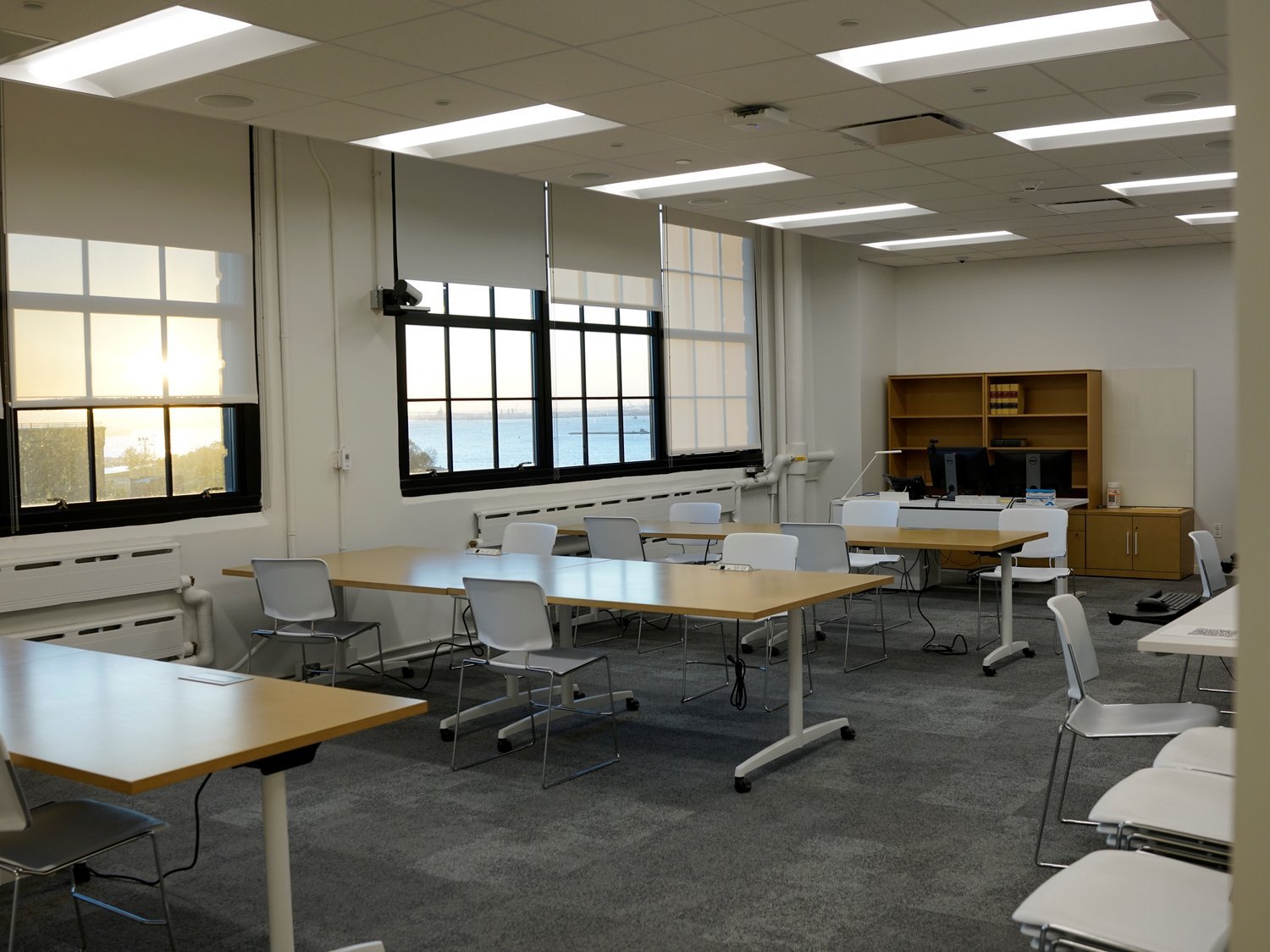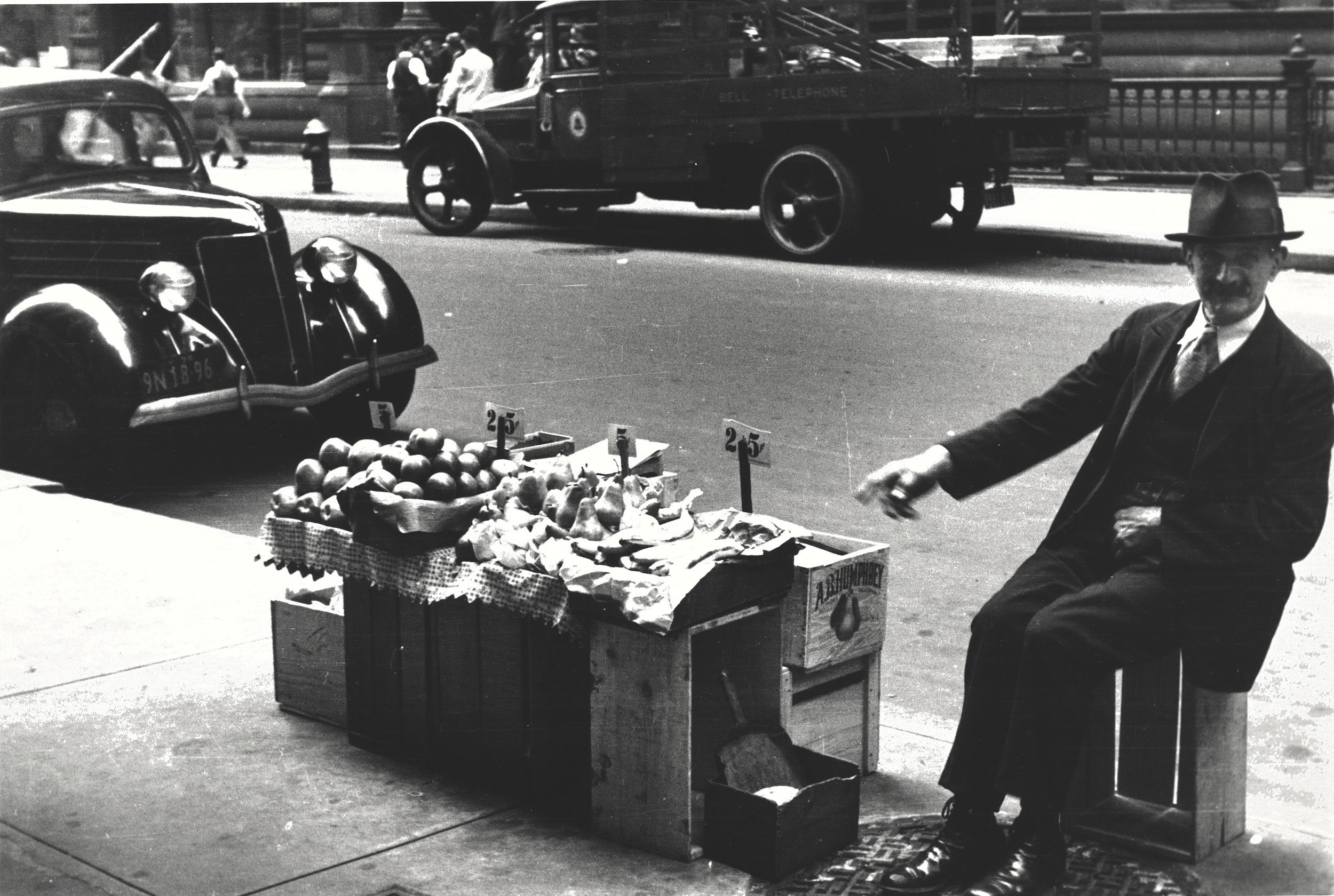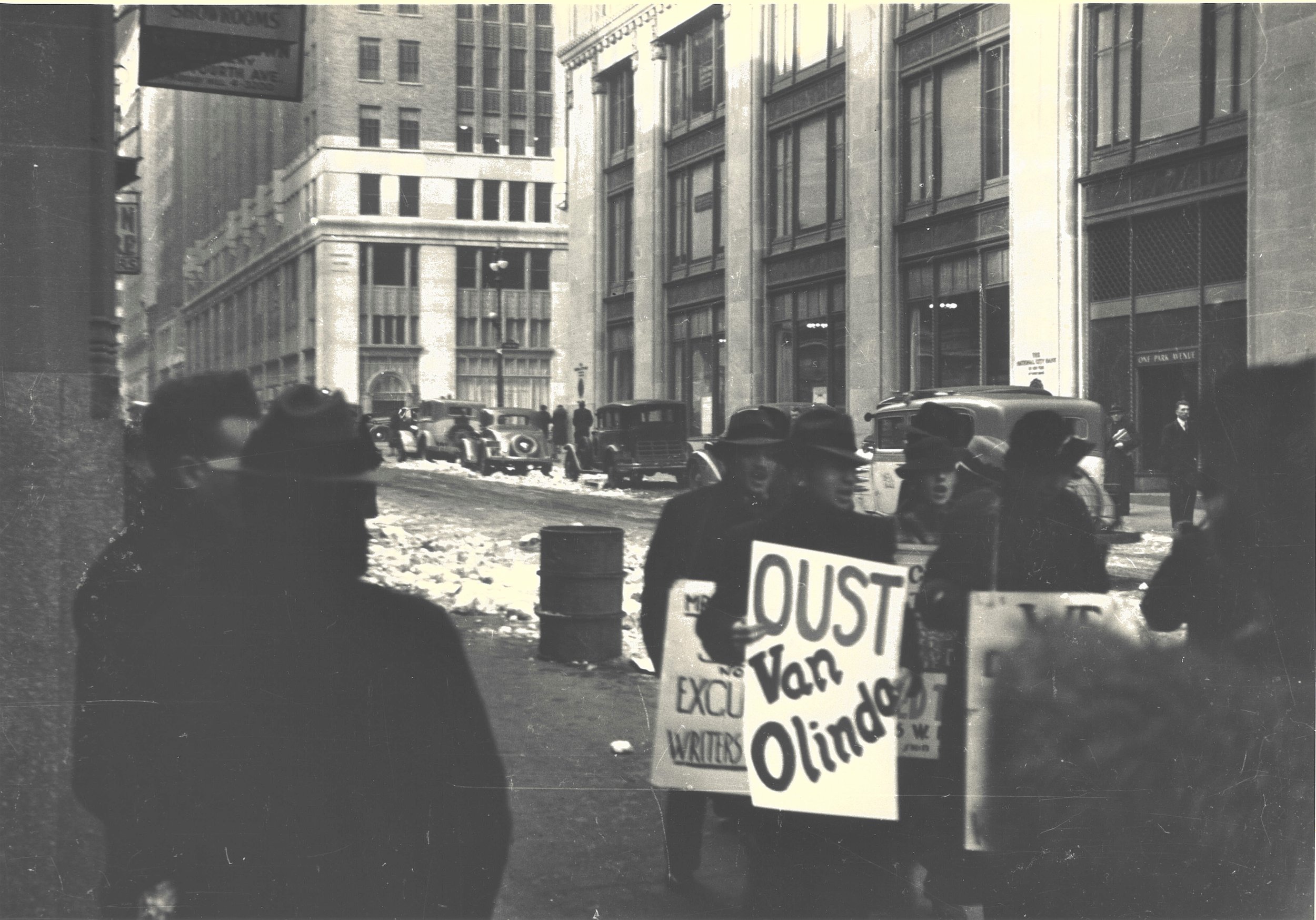In 1980, curator Barbara Millstein conducted interviews and corresponded with several surviving staff members of the New York City unit of the Works Progress Administration (WPA) Federal Writers’ Project (FWP). The knowledge she gained helped prepare interpretive materials for the Department of Records & Information Services’ exhibition “NYC Work and Work: WPA Photographs.” Recent blogs highlighted Ms. Millstein’s interview transcript with Clifford Sutcliffe and correspondence with Ralph De Sola. Both served as photographers for the FWP. This week, in the final installment of this series, we are reproducing the notes from her interview with photographer Arnold Eagle.
Sabbath Studies, 1937. Photograph by Arnold Eagle, WPA Federal Writers’ Project collection, NYC Municipal Archives.
Arnold Eagle was part of a generation of Hungarian emigrees who were influential in photography including Robert Capa, Cornell Capa, André Kertész, Brassaï, László Moholy-Nagy and Martin Munkácsi. Although not nearly as well known as his contemporaries, Eagle was significant in his own right as a photographer and photo-educator. Eagle was born December 14, 1909, in Stryi, which was then part of the Austro-Hungarian Empire. It was later incorporated into Poland before becoming part of Ukraine in 1939.
Eagle emigrated to the United States with his family in 1929. He took up photography soon after and was a member of the Film and Photo League in New York, and then the social justice-oriented Photo League. In 1937, he joined the WPA as a photographer and worked with both the Federal Art Project and the Federal Writers’ Project. He also photographed for the Public Works Administration (PWA), another New Deal program.
Eagle is best known for a book of portraits of the Orthodox Jewish community on the Lower East Side, which was published posthumously by Aperture in 1992 as At Home Only with God. Many images from this project are included in the Archives’ FWP photograph collection.
The following is a summary of Barbara Millstein’s interview conducted with Arnold Eagle on January 31, 1980.
Eagle said that he was on the project for about two years, from 1938 to 1939, but he has some records that indicate that he was on from 1937 [many of the prints from his “Sabbath Studies” project are marked “Jan-Mar 1937”]. After he left the WPA he became head of the photography project at the National Youth Administration.
Eagle said that he was one of the non-relief workers. A Mr. Vincintini, his first supervisor, liked Eagle’s work (a series of photographs on the 3rd Ave. El) and asked him to be part of the project. About 20 or 30 people worked in the photography division. Very few of the photographers did creative work. They mostly photographed paintings, murals, and models. They photographed work for the Index of American Design, and did publicity shots for other WPA agencies, as well as some creative work.
WPA publicity. Photograph by Arnold Eagle, WPA Federal Writers’ Project collection, NYC Municipal Archives.
Eagle seems to have done a little of everything, but he most clearly remembers two creative projects. The first was a series on housing, with Dave Robbins. This took about six months. He photographed slums and also some of the same people after they moved into new public housing [Eagle was probably referring to the Williamsburg Houses, which were built as a PWA project. The photographs are uncredited, but the Municipal Archives’ collections include “before” shots from 1935, and “after” shots from 1937, which might be by Eagle and Robbins.]
Eagle has a book of photographs (and also the negatives) titled ‘One Third of a Nation: A Social Document, by Arnold Eagle.’ Some of the stills were used in the film, One Third of a Nation. The photographs were also exhibited at the Federal Art Gallery. He has no recollection of these or other photographs being used in the Federal Writers’ Project books. He thinks that the Citizens Housing Council had something to do with his work, but not sure exactly what. [One Third of a Nation was a still photograph project by Photo League photographers Eagle, Sol Libsohn and David Robbins from 1935 to 1937 documenting New York City slum conditions. It was made into a 1938 play and a 1939 film by the WPA Federal Theatre Project.]
Sabbath Studies, 1937. Photograph by Arnold Eagle, WPA Federal Writers’ Project collection, NYC Municipal Archives.
His second creative project was Sabbath Studies. He has postcards done recently which reproduce these photographs, dated 1937. He had his own equipment (Speed Graphic and Roloflex cameras), but he remembers that the WPA had equipment as well, although he thinks he used his own equipment when he did his creative work. The WPA provided the other supplies (which he says were plentiful) and darkrooms as well, where he would develop his own work. He feels that he “learned a great deal from his work, even his copying work.” In general, he felt that it was a “helpful and creative kind of thing.” He had great pride in his work and enjoyed doing his work. He had a great deal of respect for the whole WPA as representing a great cultural awakening for America. He and others were trying to get away from Salon Photography, which was considered conservative, and a phony painter tradition.
He felt that photography was communication, and he came out of a documentary tradition, although many of the photographers on the WPA felt like news reporters covering assignments. He had earlier been a portrait photographer, but was always interested in documentary photography.
After the WPA, Eagle took photographs for Fortune and The Saturday Evening Post magazines and worked with Roy Stryker for Standard Oil of New Jersey. He later became a cinematographer and taught filmmaking and photography at the New School for Social Research from 1955 until shortly before his death in 1992.
Sabbath Studies, 1937. Photograph by Arnold Eagle, WPA Federal Writers’ Project collection, NYC Municipal Archives.
Sabbath Studies, 1937. Photograph by Arnold Eagle, WPA Federal Writers’ Project collection, NYC Municipal Archives.
Sabbath Studies, 1937. Photograph by Arnold Eagle, WPA Federal Writers’ Project collection, NYC Municipal Archives.
Sabbath Studies, 1937. Photograph by Arnold Eagle, WPA Federal Writers’ Project collection, NYC Municipal Archives.
Sabbath Studies, 1937. Photograph by Arnold Eagle, WPA Federal Writers’ Project collection, NYC Municipal Archives.
Sabbath Studies, 1937. Photograph by Arnold Eagle, WPA Federal Writers’ Project collection, NYC Municipal Archives.












